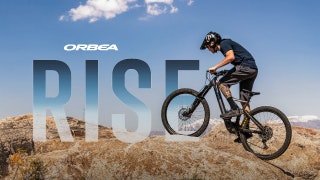Featured Brands
Recommended Products
Get free shipping, on most items, with your $50 purchase today! Same day shipping on most orders if placed by 3pm PST.
PLEASE NOTE:
This offer is only available to physical shipping addresses in the 48 continental United States (no PO Boxes), and some exclusions apply.
Oversize Charges
Some large and/or heavy items are subject to additional oversize charges that are separate from standard shipping costs.
Bike Build Process
All bikes are built, tested, tuned, and ready to ride upon shipment. The bike build process typically takes 2-3 days to complete depending on the bike model and the complexity of the build.
Stock Status
Orders for in-stock items placed by 3PM PST usually ship on the same day. Orders that include special-order or backordered items may be subject to shipping delays depending on product availability. Refer to estimated delivery times in cart when selecting shipping options.

Our Gear Advisors are Ready to Help.

Bike sizing nomenclature is used throughout the cycling industry to help riders choose a proper fitting bicycle. Mountain bikes typically use standard sizing terms such as small, medium, or large which isn't based on any specific measurement of the bicycle frame. Some mountain bikes, generally low-end bikes, use imperial measurements based on the seat tube length to identify the bike size such as 17", 19" or 21". Road bikes typically use a metric measurement based on the seat tube length to identify the bike size such as 54cm, 56cm, or 58cm. Some road bikes used standardized terms such as small, medium, or large.
A) Seat Tube Length: Most manufacturers measure seat tube length from the center of the bottom bracket to the top of the seat tube. In road cycling, this measurement indicates frame size. For example, a 56cm road bike will have a 56cm seat tube.
B) Effective Top Tube Length: The effective top tube is measured by a horizontal line from the top of the head tube to the seat post. Since seat tube angles on modern mountain and road bikes vary quite a lot, effective top tube length isn’t as accurate of a measurement for determining bike size as it used to be. With modern bikes, the reach and stack measurements are the best numbers to use when determining the size of a bike.
C) Stack: Stack is the vertical distance from the center of the bottom bracket to the top of the headtube. The true stack height of a bike will be increased by spacers under the stem and the rise of the stem and/or handlebars. In layman’s terms, stack is how tall the bike feels. The lower the stack number, the more bent over the handlebars you will become.
D) Reach: Reach is measured from the center of the head tube to the center of the bottom bracket on a horizontal plane. Many consider reach to be the most important measurement when determining the size of a bike. In layman’s terms, reach is how long a bike feels. As reach increases, the distance from your stance to the handlebars increases. Unlike top tube length, the reach measurement is standardized across all bikes. This is the best measurement to uses when comparing bike sizes regardless of brand or model.
1) Reference the size guide: All bike companies have a size guide for their bikes. These guides are a great place to start when determining which size of bike to purchase. The size chart will show the range of heights the company recommends for each size of their bikes. The size chart is a great place to start when sizing a bike, but it shouldn't be your only stop.
2) Look at the reach number: The reach number is arguably the most important measurement to look at when sizing a bike. The reach number is a standardized measurement across all bicycles. When comparing the size of one bike to the size of another bike from another brand, one should always consult the reach number. It will offer the most accurate comparison between the two bikes. Once you have ridden several bikes, you will learn which reach number works best for you and your riding style.
3) Look at the stack number: Just like reach, the stack measurement is also standardized across all bikes. It's really only important to look at the stack number if you have a point of reference. If you would like a higher or lower front end than a bike you previously had, then use the stack number of both bikes to figure out which one is taller. It's also important to remember the "effective" stack of a bike can be greatly changed with the rise of the stem and/or handlebars.
As mentioned above, the best place to start your sizing journey is with a size chart from the bike brand you intend on purchasing. The size chart below is a generic size chart based on certain measurements from a geometry chart. This size chart does not contain the standard nomenclature of small, medium, and large because each bike brand has a different definition of what a "large" is. Again, analyzing the geometry chart of a bike is the best way to understand the size of it. Additionally, every rider has a personal preference of what their "ideal" frame size is.
| Rider Height (in) | 4' 10" - 5' 2" | 5' 3" - 5' 6" | 5' 7" - 5' 10" | 5' 11" - 6' 1" | 6' 2" - 6' 4" | 6' 4" + |
| Rider Height (cm) | 148cm - 158cm | 159cm - 168cm | 169cm - 178cm | 179cm - 185cm | 186cm - 193cm | 194cm + |
| Reach | Below 420mm | 420mm - 440mm | 440mm - 460mm | 460mm - 480mm | 480mm - 500mm | Above 500mm |
| Seattube Length (in) | 13" - 14" | 15" - 16" | 17" - 18" | 19" - 20" | 21" - 22" | 23" + |
| Seattube Length (cm) | 33cm - 37cm | 38cm - 42cm | 43cm - 47cm | 48cm - 52cm | 53cm - 57cm | 58cm + |
SHOP NOW
SHIP ALMOST ANYTHING & SAVE
SHOP NOW
SHOP NOW
SHOP NOW






Follow Jensonusa